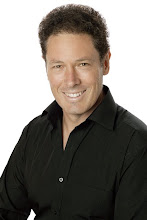One of the reasons that public health messages struggle to get through is that they are presented as very black and white, a bit like in George Orwell’s Animal Farm -“four legs good - two legs bad”. Yet with virtually all matters of health it is not that simple. There is usually a right amount. Too little or too much is a problem.
Even essentials like air and water come under this rule. If you breathe too quickly you get anxious and light headed. There is a “right” amount of air that the body needs. Too much water can be a problem as is too little.
Most public health messages are based on the tobacco principle. Tell people its bad and don’t allow any wriggle room. It is fair to say that tobacco is not healthy in any amount (although like with all poisons less is better than more). However with foods and alcohol the situation is not as clear-cut.
Now the problems associated with alcohol abuse and misuse, dwarf the combined problems from all illicit drugs. The problems include violence, road trauma, relationship breakdowns and of course numerous health problems from liver disease through to dementia. These are problems from excessive consumption of alcohol.
Yet consumed in smaller quantities these problems do not occur. Furthermore it is likely that the consumption of red wine is actually good for our hearts. This idea has been around for a while but has struggled to get much coverage as the public health people are terrified that if the public are told that a glass or two of wine is healthy that they will drink much more than that.
The really interesting thing is that those who drink harmful amounts of alcohol are not wondering about the health effects of their behavior, be it good or bad, and no one who doesn’t like wine will suddenly start drinking it for medicinal purposes.
So lets just stick to the facts. It has long been observed that the French have lower rates of heart disease despite eating diets higher in fats compared to Anglo-Saxon countries. Attempts to explain this have always come back to the consumption of red wine. This has been documented many times. There are a few mechanisms-the main one being Resveratrol. There are some “cardio protective” effects from this including an increase in HDL or good cholesterol.
Resveratrol is now marketed as a supplement and this likely has some benefits. However, it is also likely that the benefits from red wine are not just due to Resveratrol and that there are other bio-active compounds working in with it. Reducing nature to one working part will generally mean something is left out.
So what is the take home message in all this? A glass or two (1-2 for men 1 for women) of red wine a few days a week is not only not bad for you but probably good for you. Is this a reason to take up wine? —No. Is more better? —No it’s worse.
Can you enjoy a glass of wine with your meal and not feel guilty? –absolutely.

